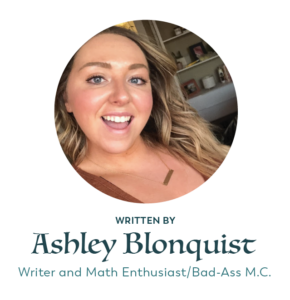When it comes to writing any type of content – whether it’s emails, blogs, social posts, or whatever – you’ve likely heard the terms active voice and passive voice. But if you haven’t studied high school English since, well, high school, it’s hard to remember what that means…or why you should care.
Ashley here, and I’m admittedly notorious for writing in passive voice. Okay, so not really notorious; I can’t give myself that much credit or recognition. But Grammarly always knows when I write in the passive voice and – respectfully – won’t shut the fuck up about it. See what I mean?

And I get it – over the years, I’ve learned that it’s not considered “good practice” to use a passive voice in writing. I’ve also learned that rules and guidelines are meant to be bent, re-shaped, and challenged from time to time. Especially when it comes to writing.
But does the same apply to using passive voice? Let’s find out!
Passive voice vs. active voice
For those who need a refresher (including myself), let’s take a beat to re-familiarize ourselves with passive voice.
First, we need to remember that a sentence should always have a noun, subject, and verb. For example:
Ashley [subject] writes [verb] blogs [noun].
The above sentence is written in active voice because I, the subject, am performing an action to the blogs. With me so far?
In passive voice, the subject, noun, and verb get tossed around and become surrounded by additional words and prepositional phrases.
The blogs [subject] are being written [verb] by Ashley [noun].
See the difference? In passive voice, the blogs are now the subject. And the subject is receiving the action instead of performing the action.
Both sentences are getting the same message across, but the first one is clear and to the point, while the second is longer and a little bit harder to understand. So, just to recap:
Active voice: Ashley writes blogs.
Passive voice: The blogs are being written by Ashley.
NOTE FROM LATASHA: Do you also see that the more passive version feels more “female”? It’s interesting to see how a shift to active voice can help women channel their inner Chad. I’m super guilty of using passive voice myself (hell, I could be using it in this blurb, IDFK). But when I focus on active voice in my communications with clients, I feel more assertive and clear! Just a little tip!
Is passive voice bad for content writing?
In short: not really. Passive voice isn’t inherently bad for content writing. But it’s not necessarily the best option for making a strong impact.
As a general rule of thumb, you should always aim to write in an active voice. It’s clear, it’s concise, and it’s actionable – all of which are characteristics of good content. And, as we all know, good content is crucial for success no matter what you’re selling or what type of business you’re running.
Writing in an active voice is also beneficial for a few other reasons, like:
- Making your content easier to read and understand (which is great for SEO copywriting!)
- Establishing a more natural tone and brand voice
- Engaging your audiences
Of course, trying to write in an active voice all the time isn’t a standard you should hold yourself to. Sometimes your content just sounds better in passive voice. And that’s okay!
Pro tip: Grammarly is a great tool that helps identify passive voice when you’re editing your content…as long as you’re cool with constructive criticism. (Just don’t blame me when it pisses you off.)
When is it okay to use passive voice?
Passive voice is okay to use in any instance. But, just like active voice, there are certain instances when passive voice is preferred.
For example, news stories and scientific reports are often written in a passive voice. That’s because the action is typically more relevant than the doer of said action. Here’s what I mean:
Active voice: Chris ran the DNA tests to determine a match.
Passive voice: The DNA tests were run to determine a match.
In this instance, passive voice is preferred because what matters most is that the DNA tests were run – not the fact that Chris ran them.
Bottom line: If you want to focus more on what happened vs. who is involved, then passive voice is totally acceptable to use. In fact, I’ve used passive voice a few times throughout this blog. Suck it, Grammarly.

However, as content gurus ourselves, we challenge you to stay in the active voice as much as possible. You’ll be surprised by how much it can elevate your writing!
And if you ever need help with writing your content, we’ll leave you with these two options:
- Check out our services or schedule a call with Latasha!
- Our services can be looked at on our website, or a call can be scheduled with Latasha!
The choice is yours!

